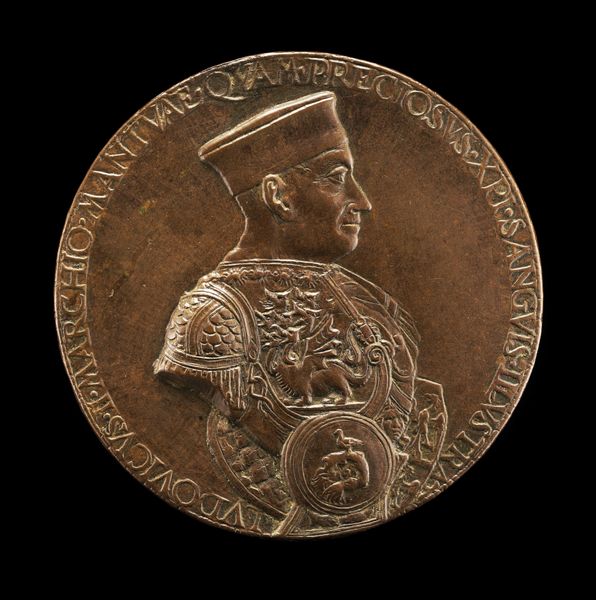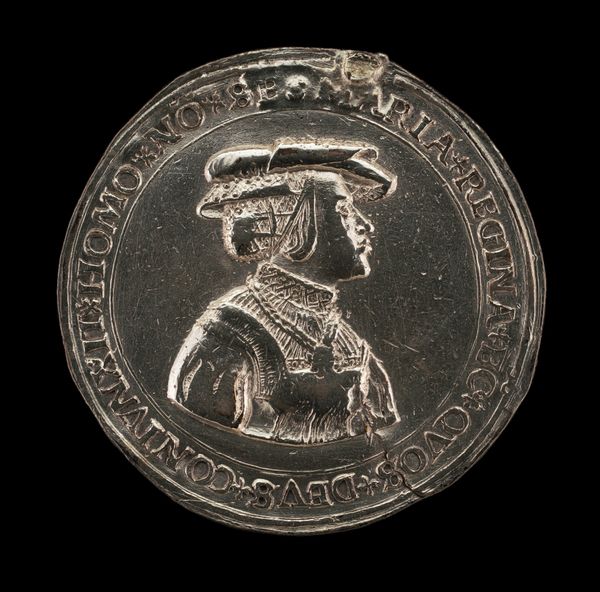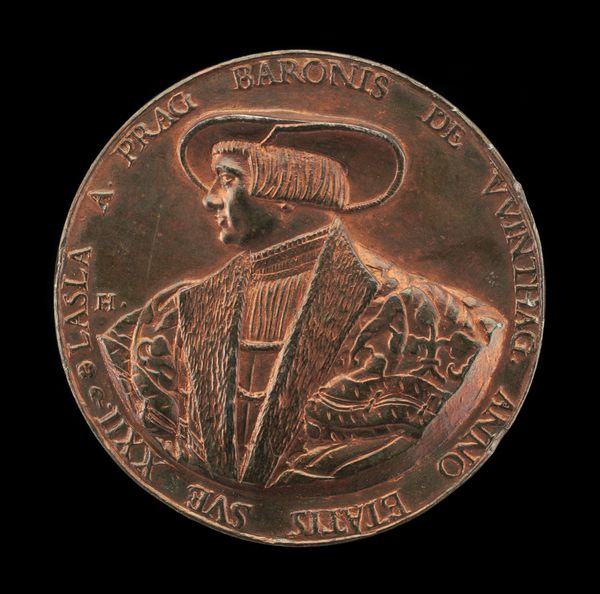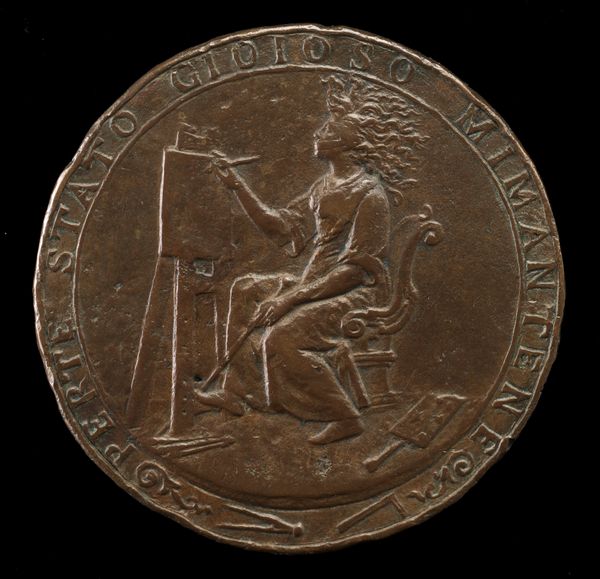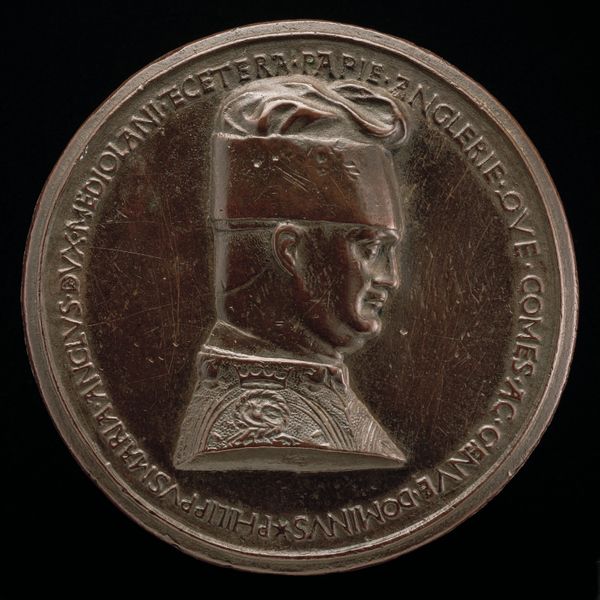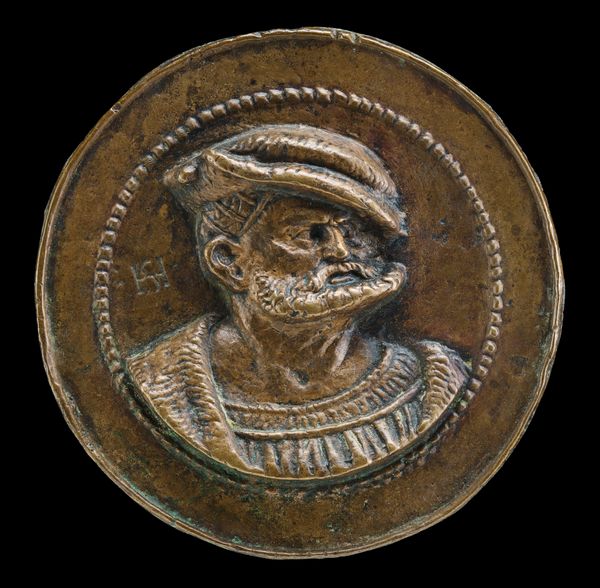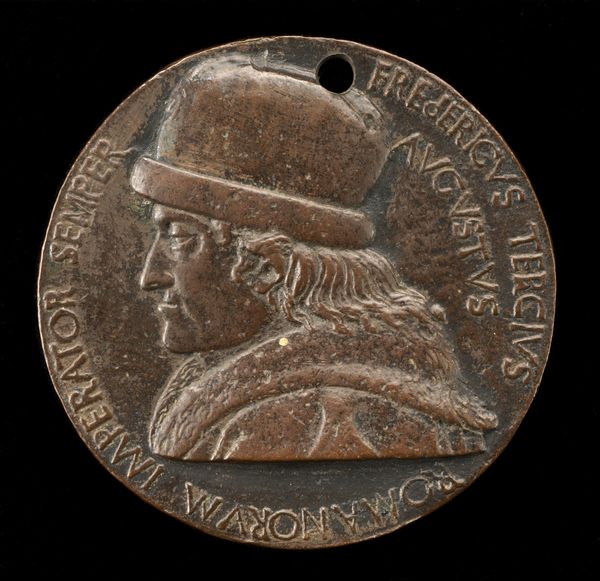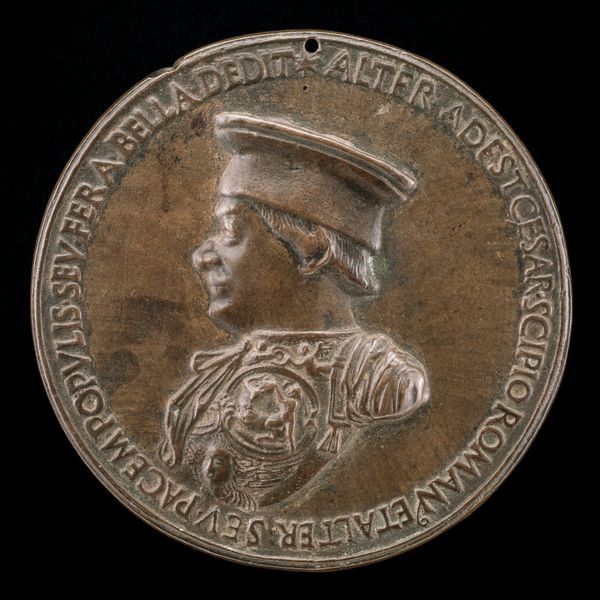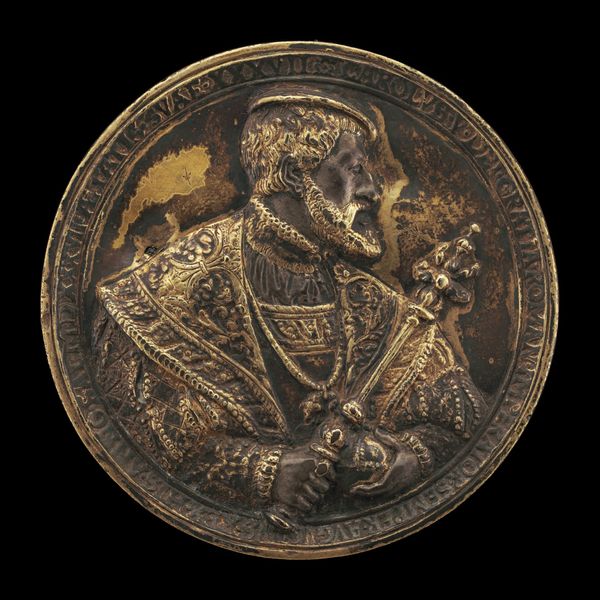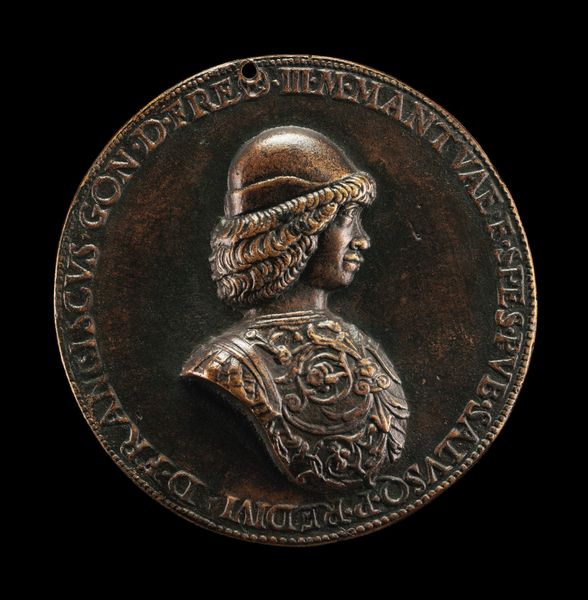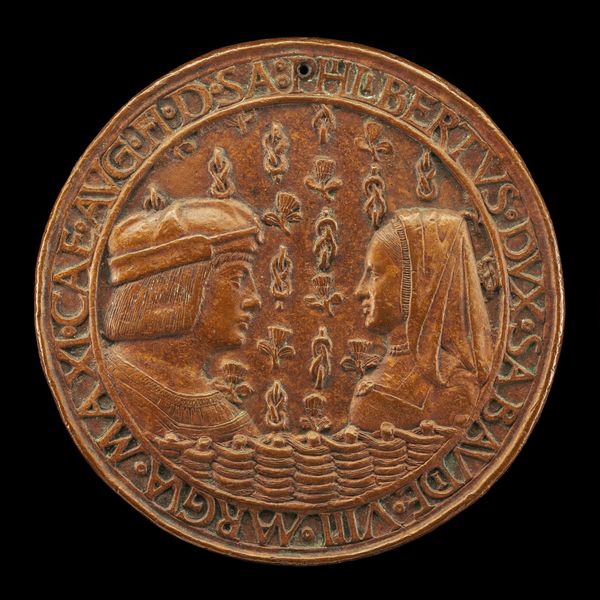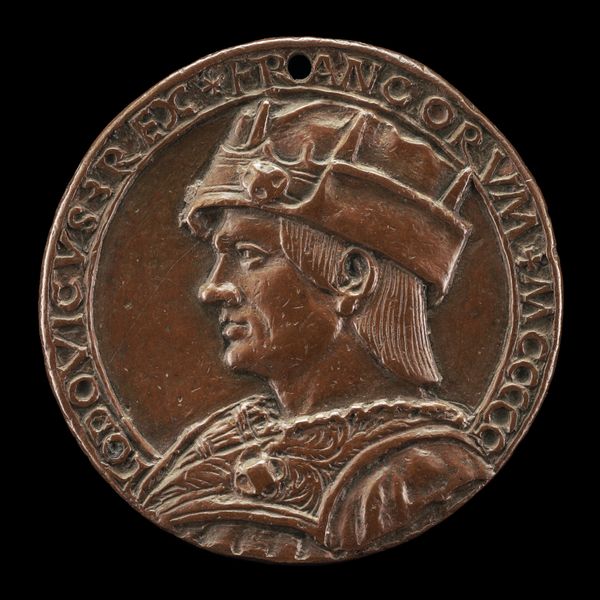![Willibald von Redwitz, 1493-1544, Canon of Bamberg [obverse] by Peter Dell the Elder](/_next/image?url=https%3A%2F%2Fd2w8kbdekdi1gv.cloudfront.net%2FeyJidWNrZXQiOiAiYXJ0ZXJhLWltYWdlcy1idWNrZXQiLCAia2V5IjogImFydHdvcmtzL2I1N2VjZGRmLTUzOGYtNDFmNi1hYzU3LWQ5YWJkNTI0ODE5OS9iNTdlY2RkZi01MzhmLTQxZjYtYWM1Ny1kOWFiZDUyNDgxOTlfZnVsbC5qcGciLCAiZWRpdHMiOiB7InJlc2l6ZSI6IHsid2lkdGgiOiAxOTIwLCAiaGVpZ2h0IjogMTkyMCwgImZpdCI6ICJpbnNpZGUifX19&w=3840&q=75)
Willibald von Redwitz, 1493-1544, Canon of Bamberg [obverse] 1536
0:00
0:00
bronze, sculpture
#
portrait
#
medal
#
high-renaissance
#
sculpture
#
bronze
#
11_renaissance
#
sculpture
#
history-painting
Dimensions: overall (diameter): 11.16 cm (4 3/8 in.) gross weight: 451.8 gr (0.996 lb.) axis: 11:00
Copyright: National Gallery of Art: CC0 1.0
Curator: This striking bronze medal, crafted by Peter Dell the Elder in 1536, immortalizes Willibald von Redwitz, a Canon of Bamberg. Editor: There’s a solemnity about this piece. Despite its small scale, the details convey a real sense of weightiness. The textures of the fabric, the intricate detailing on the hands – it’s meticulously rendered. Curator: Medals like these served as tools of diplomacy and self-promotion during the Renaissance. Redwitz, as a high-ranking cleric, would have been keenly aware of the power of imagery in shaping public perception. He commissioned this, ensuring his legacy within Bamberg's history. Editor: It makes me consider the power dynamics at play. Whose stories get told and how? A canon of Bamberg had considerably more power to have his story preserved than others at the time, reflecting Renaissance ideals of social hierarchy. What message did he intend to convey? Curator: We see him in profile, adorned in his clerical robes. Note the Latin inscription around the perimeter. It likely denotes his titles and affiliations, a vital component for signaling status in the Renaissance world. It’s fascinating how art like this becomes an instrument within broader institutional power structures. Editor: Yes, the choice of bronze as a medium is also telling; it speaks to permanence and value, very purposefully conveying power. It also is so obviously created by and for men in positions of power within the church— where would women feature in such narratives? Curator: Absolutely. The patronage system determined much of art production during this period, creating an inherent bias towards specific social groups and their ideals. Works such as this are pivotal in our ongoing dialogue with art from previous centuries. Editor: Seeing this piece reminds me that no artwork is created in a vacuum. Even what seems like a straightforward portrait is embedded within layers of social and political narratives. I hope visitors leave questioning the systems within art, and considering whose images we see in our cultural spaces and whose we still exclude. Curator: And that the careful arrangement of imagery within it—the details of the clothes, the inscriptions—was intentional. In short, these are fascinating pieces which really ask who decides which lives matter.
Comments
No comments
Be the first to comment and join the conversation on the ultimate creative platform.
